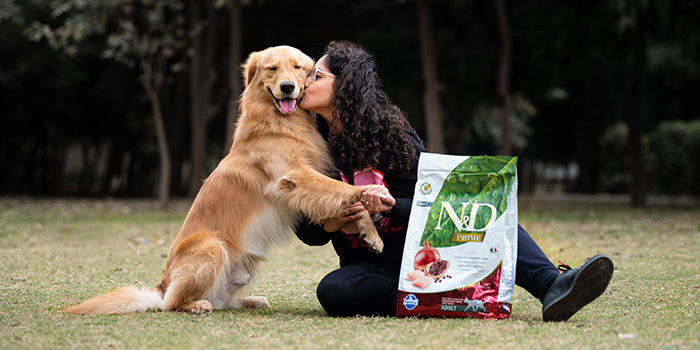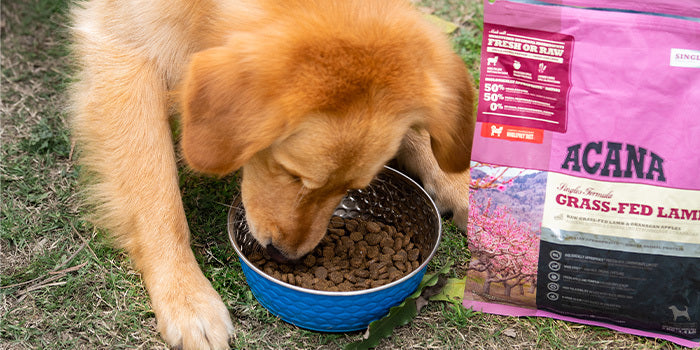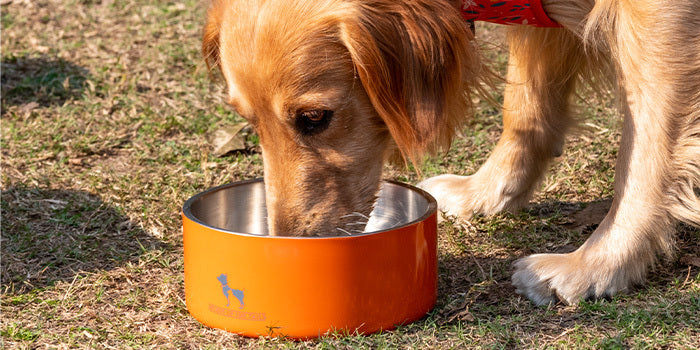7 min read
Don't let unhealthy pet food brands deceive you. You can tell if pet food is healthy and safe for your furry family member by reading the packaging label carefully. The key is to be aware of misinformation.
We have curated 5 easy steps on how to read packaging label of a pet food brand to help you be an informed pet parent while choosing what goes in your adorable pet's tummy:

The first step is to ensure that the pet food you choose is the right diet for your pet. Safe diets typically fall into one of these 3 categories:
1. Complete Diet: This contains all nutrients required by your pet.
2. Supplementary Diet: This contains partial nutrients required by your pet and should be mixed and given with another food.
3. Balanced Diet: The nutrients are present in the correct ratios.

HUFT TIP: These 3 diets can come in the form of dry pet food (kibble) or wet pet food (which contains water). Always check the label or packaging to see if the product should be fed with other foods.
Unsafe diets you should avoid:

This step is the most crucial one. The ingredient list on any packaging is displayed from most to least by weight. This means that the first 5 ingredients listed are the ones that are used the most. For example, if ingredient 'A' is used more than ingredient 'B' during preparation, 'A' is displayed first followed by 'B'. Look for ingredients that your pet needs. A meat, poultry or fish based diet that is high in protein and taurine content is ideal for cats and dogs.
Ingredients that are a BIG NO and should be avoided for packaged pet food are as follows:
Ingredients that are up for debate:
The key thing to look out for is that the meals are specific animal meals. In meat meals, for example, we have no idea of what meat is used. One should look for specific animal meals – chicken (not poultry) meal, lamb (not meat) meal etc.
Read More: The Fuss About Grain Free Dog Food
Reading and understanding the “Guaranteed Analysis” section of pet food packaging is important. This section is close to the ingredient list and by referring to the guaranteed analysis label, you can determine if your pet will receive the appropriate nutrients from their food.
This section is usually broken down into 4 sections:
The Guaranteed Analysis section provides the maximum amount of protein and fat, as well as the minimum amount of moisture and fibre, with regulated numbers. You want your pet’s food to include essential nutrients such as calcium, phosphorus, taurine (for cats), at least 30% protein, Omega-3 & Omega 6 fatty acids, at least 18% fat and preservatives via Vitamin E and/or C, vitamins and minerals.
A good rule of thumb is to look for diets that follow the 95% rule. These are foods that include at least two ingredients that are the primary components of the diet. Eg: “Tuna with Shrimps” or “Chicken with Pumpkin”. This means that 95% of the diet consists of these ingredients (not counting any water added during processing).
HUFT Tip: We recommended comparing pet food from the same category. Avoid comparing percentages between wet pet food and dry pet food as their moisture levels will be different.

Depending on their species, breed and life stage, the feeding quantities for pets will differ. These are basic guidelines that should be adjusted according to your pet’s appetite, level of activity, health problems and special conditions.
While some labels might give basic instructions, others will have this information in the form of tables. A good sign is if the label has mentioned specific guidelines.
For example, if the food is suitable for pets of all ages, it should ideally specify feeding directions for each life stage. Or if it is a supplementary food, they should specifically mention the ratio of the food that is to be mixed.
HUFT Tip: If you observe your pet gaining or losing weight too frequently, we recommend consulting your vet and adjusting their food intake accordingly.

Pet food packaging labels can sometimes provide additional information, such as the country of origin, clearing markers, the expiration date, and any feeding precautions. Read through this information carefully to ensure that you are providing the best possible nutrition for your pet.
Having a general knowledge of where the ingredients come from can give insight into the quality and safety of the food. For example, if the ingredients are sourced from a reputable supplier that has strict quality control measures in place, this may indicate that the food is of a higher quality. On the other hand, if the ingredients are sourced from questionable sources, this may raise red flags about the safety of the food.
Knowing if the manufacturing facility has cleared certain markers can indicate that the food has been produced in a safe and hygienic environment. Few such markers in India include:
And there you have it!
By following these 5 easy steps, you can confidently read the packaging content of any pet food brand and choose the best nutrition for your pet.
If you have any questions about selecting the right pet food, our customer support team is here to help. You can reach us at 011-408-45122 or email us at hello@headsupfortails. We're always happy to assist you in picking the right food for your furry friend!

When reading pet food labels, one should look for the ingredients list, guaranteed analysis, and feeding instructions. The ingredients list will tell you what the food is made of, and the guaranteed analysis will tell you the nutrient content. The feeding instructions will tell you how much to feed your pet.
The ingredients list on a pet food label tells us what the food is made of. Ingredients are listed in order of weight, with the heaviest ingredients listed first. Look for high-quality protein sources like chicken, beef, or fish, as well as whole grains, fruits, and vegetables.
The guaranteed analysis on a pet food label tells us the nutrient content of the food. Look for a food that meets the minimum nutrient requirements for your pet's life stage and activity level. Nutrients to look for include protein, fat, fiber, and vitamins and minerals.
Pet food labels are regulated by the FDA and must meet certain standards. However, some claims on pet food labels can be misleading or exaggerated. We recommend looking for specific ingredients and nutrient information rather than marketing claims.
The feeding instructions on a pet food label are a good starting point, but the amount you should feed your pet may vary based on factors such as appetite, age, activity level, and health status. Consult with your veterinarian to determine the appropriate amount to feed your pet!
POSTED IN :
Summer is a special time for many, with longer days, warmer weather, and radiant sunshine. It'...
As long as you’re around, your pet is assured of a healthy, comfortable and happy lifestyle. Howe...